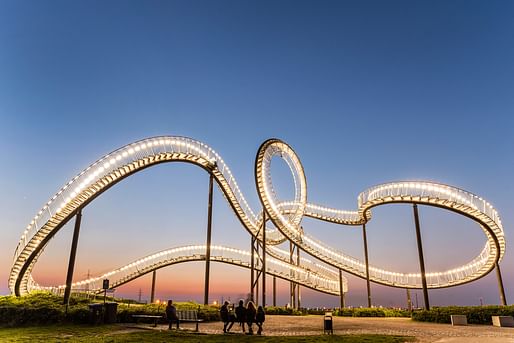

What should we do with industrial sites after they have fulfilled their original purpose? Considering the fact that so many of the now disused sites are so close to city centers, the answer to this question can determine the quality of city life for many places around the world.
In Germany, the answer has frequently been to artfully transform these sites into places of public use. Take Landschaftspark Duisburg-Nord, a former coal and steel production plant that ceased operations in 1985 and was reopened in 2002 as a public park. According to its designers, Latz+Partner, the intention of Duisburg Nord was "to integrate, shape, develop and interlink the existing patterns that were formed by its previous industrial use, and to find a new interpretation with a new syntax. The existing fragments were to be interlaced into a new “landscape”.
In Gelsenkirchen, the Herman Prigann sculpted a concrete structure atop a former mine dump. Titled "Stairway to Heaven," the sculpture recalls the site's industrial past by adding to it while avoiding the costly displacement of industrial materials from the site.
There are few examples that exist in America, but one standout is the Sloss Furnaces National Historic Landmark, in Birmingham, Alabama. A former pig iron-producing furnace from 1882-1971, it was repurposed as a landmark thanks to its becoming among the first American industrial sites to receive historic preservation status. In October, the site becomes "Fright Furnace," a haunted house tour that highlights the alleged ghost encounters described on the site since it first opened.
No Comments
Block this user
Are you sure you want to block this user and hide all related comments throughout the site?
Archinect
This is your first comment on Archinect. Your comment will be visible once approved.